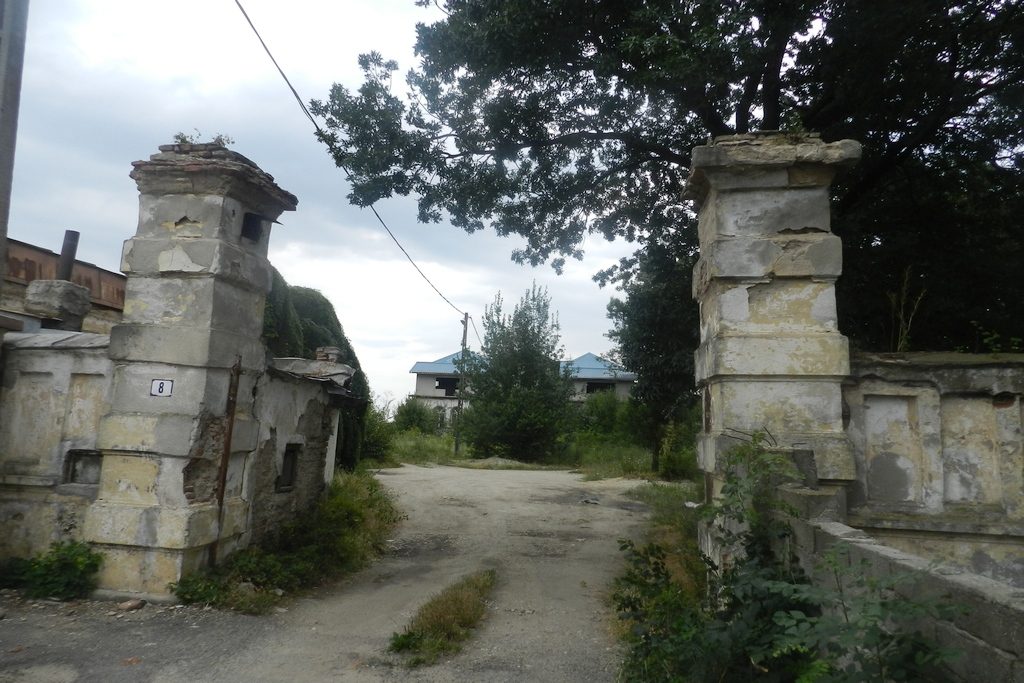

The mansion was built on the border of the lake Mihăilești, at the beginning of the XXth century.
At the end of the XIXth century, Mihăilești had the statue of a rural commune which was part of the hundred Câlniștea of the county Vlașca and it was formed by the villages Mihăileștii de Jos, Mihăileștii de Sus, Tufele, Băneasa and Costieni with 1892 inhabitants. In the commune there were three churches and a mixed school with 61 students (among whom 11 were girls). At that time, on the current territory of the commune there also functioned in the same hundred the commune Novaci and Popești, each formed only by the village of residence. The commune Novaci had 683 inhabitants, a church and a school with 40 students (among whom 10 were girls). The commune Popești had 796 inhabitants, a church and a mixed school with 26 students.
The Annual Socec of 1925 records the fact that the communes in the hundred of Argeș of the same county. The commune Mihăilești had 2424 inhabitants in the villages Costieni, Mihăileștii de Sus și Mihăileștii de Jos. The commune Novaci had 1286 inhabitants and the commune Popești – 1118. In 1931, the commune Popești was dissolved, the village Popești passing onto the commune Novaci, and the commune Mihăilești was formed by the villages Mihăilești and Tufa – Costieni.
In 1950, the commune Mihăilești became the residence of the district Mihăilești of the region Bucharest, of which there was also part the commune Novaci. In 1952, the district was dissolved, the communes being assigned to the district Drăgănești – Vlașca from the same region. In 1968, there passed onto the county of Ilfov. Also, at the same time, the commune Novaci was dissolved, its villages passing onto the commune Mihăilești. The village Tufa – Costieni was also dissolved, agglomerated with Mihăilești. In 1981, a regional administrative reorganization led to the transfer of the commune to the county of Giurgiu. The commune Mihăilești received the statute of city in 1989.
In the city Mihăilești there are found four historical monuments of national interest. One of them is the archeological site of the Dacian citadel Argedava (the period Latène), situated “at Nucet” (at North from the village Popești). Other three churches from the territory of the city are classified at the national level as being historical architecture monuments: the church “Saint Voivodes” (1714) from Mihăilești; the church “The Assumption of Mary” (the XVIIIth century) from Novaci; and the church “the Holy Trinity” (1688 – 1689) from Popești.
As for the rest, other 7 objectives from the commune are included on the list of historical monuments from the county of Giurgiu as monuments of local interest. Two of them are archeological sites – the site from the “church Tufa – Costieni”, where there were found traces of some establishments from the Period of Early Bronze (the culture Glina III and Tei) and from the period Latène (the centuries IIIrd – Ist b.Chr.); and the Getae – Dacian tumular necropolis discovered at the exit from Popești, on the left side of the road towards Novaci. The other five are classified as architecture monuments: the church “Saint Nicholas” (1870) from Drăgănescu; the house Maria Călin (1920); the house Marin Matei (1927); the house Maria State (1931), the last two are from Novaci and the old school (1900), which is today a kindergarten, from the north part of the village Popești.
